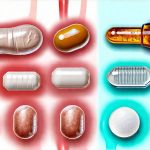The persistent urge to urinate, even when your bladder isn’t full, can be incredibly disruptive to daily life. It’s often dismissed as just ‘having a weak bladder,’ but the truth is far more nuanced. Many people experience frequent and urgent urination not because of a problem with their bladder, but because of irritants – substances or habits that trigger an inflammatory response within the urinary tract, making it hypersensitive. These hidden culprits can be surprisingly common, lurking in everyday foods, drinks, and even personal care products. Identifying and eliminating these irritants is often the first step towards regaining control and experiencing lasting relief from bothersome bladder symptoms.
This isn’t about a quick fix or a restrictive diet; it’s about understanding your body and making informed choices to support its natural function. Many individuals find significant improvement simply by becoming aware of potential triggers and modifying their lifestyle accordingly. It requires a bit of detective work, patience, and self-observation, but the rewards – increased comfort, improved sleep, and greater freedom from worry – are well worth the effort. Remember that everyone is different, so what irritates one person’s bladder may not bother another’s; the key lies in personalizing your approach.
Identifying Common Bladder Irritants
The spectrum of substances capable of irritating the bladder is surprisingly broad. It extends beyond the obvious caffeine and alcohol to include acidic foods, artificial sweeteners, certain spices, and even some medications. Understanding these potential triggers is crucial for initiating a process of elimination and identifying what specifically impacts your bladder health. Often, it’s not a single culprit but rather a combination of factors that contribute to symptoms. Keeping a detailed bladder diary, noting everything you consume and experiencing urinary symptoms soon after, can be incredibly helpful in pinpointing these connections. This diary should include details like time of consumption, quantity, and the specific symptom experienced (urgency, frequency, pain).
Beyond dietary sources, consider external irritants as well. Harsh soaps, bubble baths, feminine hygiene products containing fragrances or dyes, and even certain laundry detergents can cause irritation through contact with the perineal area, leading to bladder symptoms. Similarly, tight-fitting clothing can restrict circulation and potentially exacerbate sensitivity. It’s important to remember that the urinary tract is closely connected to other bodily systems; stress, dehydration, and even inadequate sleep can also play a role in bladder function and sensitivity.
Finally, don’t underestimate the power of seemingly innocuous habits. Holding urine for prolonged periods consistently stretches the bladder and can weaken its muscles over time, contributing to urgency and frequency. Conversely, habitually rushing to the bathroom when you feel only a slight urge can actually reinforce that sensation and create a cycle of needing to go more often. A balanced approach – emptying your bladder at regular intervals without unnecessary delay or prolonged holding – is key to maintaining healthy bladder habits. If you experience frequent UTIs as well, consider learning how to monitor UTI recovery at home.
Dietary Adjustments for Bladder Health
Diet plays an undeniable role in bladder health, and making thoughtful adjustments can yield significant improvements. The goal isn’t necessarily to eliminate entire food groups but rather to identify and minimize consumption of known irritants. One of the first areas to address is acidity. Highly acidic foods like citrus fruits (oranges, lemons, grapefruit), tomatoes and tomato-based products, vinegar, and spicy foods can all irritate a sensitive bladder. This doesn’t mean you have to avoid them forever; it simply means reducing your intake or observing how your body reacts to small portions.
Hydration is also paramount, but the type of fluid matters. Water should be your primary beverage choice – aim for 6-8 glasses daily. However, certain beverages are notorious bladder irritants: caffeine (coffee, tea, soda), alcohol (especially beer and wine), carbonated drinks, and artificial sweeteners. These substances can directly stimulate the bladder or disrupt its natural function. Experimenting with herbal teas that are known to be gentle on the bladder, like chamomile or peppermint (in moderation), may offer a soothing alternative. Pay attention to how your body responds; some individuals find even seemingly benign beverages like cranberry juice irritating due to their acidity.
Consider incorporating foods with anti-inflammatory properties into your diet. Foods rich in omega-3 fatty acids (salmon, flaxseeds, walnuts) and antioxidants (berries, leafy greens, turmeric) can help reduce inflammation throughout the body, potentially lessening bladder sensitivity. A balanced diet that prioritizes whole, unprocessed foods is generally beneficial for overall health and contributes to a healthier urinary system.
Recognizing & Addressing Food Sensitivities
Food sensitivities, even mild ones, can sometimes manifest as bladder irritation. While true food allergies are relatively rare, many individuals have undiagnosed sensitivities to specific foods that trigger inflammatory responses in the body, indirectly affecting bladder function. Common culprits include dairy, gluten, soy, corn, and eggs.
- Elimination Diet: The most effective way to identify food sensitivities is through an elimination diet. This involves removing suspected trigger foods from your diet for a period of 2-3 weeks, then gradually reintroducing them one at a time while monitoring for any changes in bladder symptoms.
- Food Sensitivity Testing: While commercially available tests can be tempting, their accuracy and reliability are often questionable. It’s generally more reliable to rely on the elimination diet approach under the guidance of a healthcare professional.
- Gut Health Connection: A healthy gut microbiome is crucial for overall health, including bladder function. Consider incorporating probiotic-rich foods (yogurt, kefir, sauerkraut) or supplements to support your gut bacteria.
The Role of Artificial Sweeteners
Artificial sweeteners are often marketed as a healthier alternative to sugar, but they can be surprisingly problematic for bladder health. Many artificial sweeteners – aspartame, sucralose, saccharin – have been linked to increased bladder sensitivity and urgency in some individuals. Their chemical composition can directly irritate the urinary tract or disrupt gut bacteria balance, leading to inflammation.
- Hidden Sources: Artificial sweeteners are found in a wide range of products beyond diet sodas, including sugar-free candies, chewing gum, yogurt, and even some medications.
- Stevia as an Alternative?: While often touted as a natural alternative, stevia can also cause irritation for some individuals. It’s important to test your individual tolerance.
- Reduce Overall Sweetener Intake: The best approach is to reduce overall sweetener intake, both artificial and natural, and focus on whole foods with naturally occurring sweetness.
Understanding the Impact of Spices
Spicy foods can definitely irritate a sensitive bladder due to capsaicin, the compound that gives peppers their heat. However, it’s not just chili peppers; other spices like cinnamon, nutmeg, and even black pepper can also contribute to irritation in some individuals. The level of sensitivity varies greatly from person to person.
- Experiment with Mild Options: If you enjoy spicy flavors, try experimenting with milder options or using smaller amounts of spice.
- Herbs as Alternatives: Incorporate fresh herbs like basil, oregano, and parsley to add flavor without irritating the bladder.
- Monitor Your Reactions: Pay close attention to how your body responds after consuming different spices and adjust accordingly.
Ultimately, managing bladder irritants is a personalized journey. There’s no one-size-fits-all solution; it requires self-awareness, experimentation, and a willingness to make adjustments based on your individual needs. By embracing a proactive approach and paying attention to your body’s signals, you can significantly improve your bladder health and reclaim control over your daily life. If you are unsure about the cause of your symptoms or if they persist, it’s always best to differentiate vaginal and bladder issues with a healthcare professional.





















